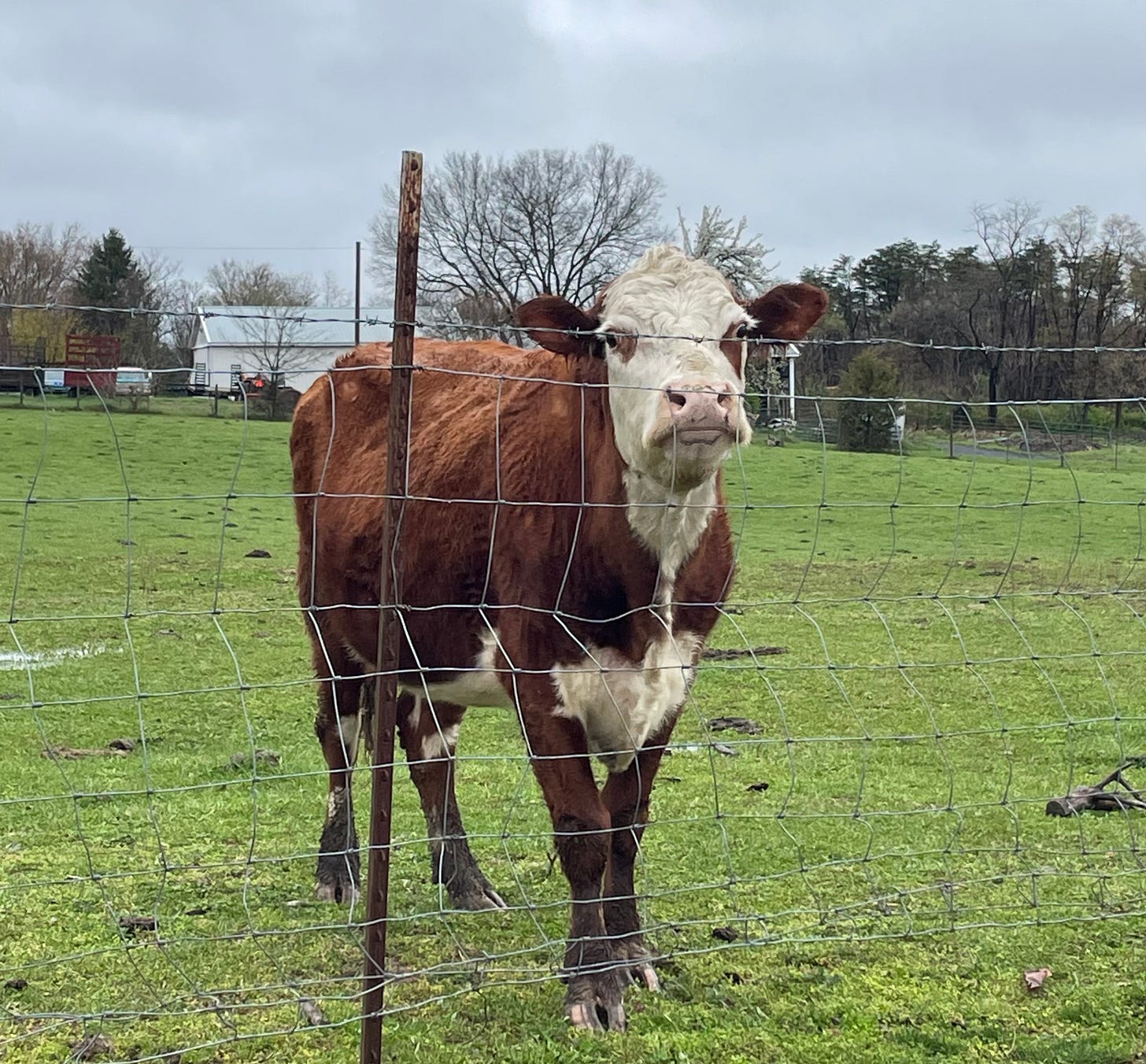If you are new here, welcome to Dr. Amber_Writes. I am a clinical psychologist that writes weekly about mental health. I aim to bring you evidenced-based information, with a personal touch. Check out this post to read more about why I started writing in the first place. If you want to hear from me again, subscribe any time.
It is April and there is no denying that winter is behind us. On the first official day of spring two weeks ago, I noticed I did not feel quite ready to leave the cocoon of winter. The subtle changes jog my memory uninvited, causing me to recall where I was at and what I was feeling this time last year. Our memories can be triggered by the slightest cues; just the feeling of the warm breeze, the sunshine that lingers later and later each evening, and the cherry blossoms showing off throughout the neighborhood. They are whispering to me, “It’s been a whole year.”
Many people share with me in therapy how seasons can become associated with painful or challenging reminders. Our nervous systems are designed to work this way; taking particular care to notice and remember the details of a traumatic moment. It is an evolutionary safeguard, intended to raise our awareness when similar “threatening” conditions occur in the future.
I was surprised to notice my own feelings of trepidation and unease that correlated with the early signs of spring. I have never enjoyed winter; I hate being cold and have no love for snow. I usually feel relief and joy when the air starts to warm, and the days get longer. I’ve had over three decades to associate spring with warm sun, blossoming gardens, and the promise of summer vacations. And yet, it took only one difficult April to change the way that spring feels. Trauma and loss can leave a scar that continues to ache long after the original hurt has passed.
Spring also comes with expectations. It has its own story, ripe with new beginnings, awakenings, and rejuvenation. It can be disheartening to find yourself not feeling what you expect to feel. This discrepancy can be significant for some people; for example, we know that suicides tend to peak in the months of April, May and June. One hypothesis is that for those who spend the winter months depressed, it can be especially painful to carry that depression into the spring, when seemingly everyone else is experiencing a boost of joy and energy.
This morning, I awoke to the rumble of thunder. The predawn darkness was illuminated by flashes of lightning that seemed too swift and intense at this slow and sleepy hour. A clap of thunder was so loud that the house quivered around me. From the warmth of my bed, the unexpected morning storm felt like a treat. I remembered that spring comes in like a lion.
The parts of this season that we cherish, like the return of greenery, the twittering of birds and the hum of evening insects, the geese floating on freshly thawed bodies of water; it all comes along with the rain, wind, and shifting temperatures that also characterize nature’s awakening.
If you are struggling with the transition to spring, whether it be a result of trauma, grief, or depression, you do not have to resist or eliminate those feelings. In fact, when it comes to thoughts and feelings, “what we resist, persists.”
Instead, what if you could make space for the sadness or anxiety in your story of what this season is “supposed” to feel like? Can your expectations expand to include these thoughts, feelings, and memories as well? Instead of mourning the fact that you are not feeling how you would like, can you practice acceptance of where you are at this time in your life, with the understanding that it is all impermanent. Just because you feel this way now, does not mean that this is how you will feel tomorrow, or next month, or every spring forthcoming.
Practice staying in the moment.
When our mind tempts us into the past, it can contribute to feelings of depression, resentment, or stuck-ness (that is a feeling, right?) When our thoughts wander too far ahead, we can find ourselves feeling anxious and uncertain. There are strategies to help practice “grounding”, which means planting your feet and mind firmly in the present moment. Tuning into your 5 senses can help bring your attention back to the present.
What are 5 things you can see? 4 things you can hear? 3 things you can touch? 2 things you can smell? 1 thing you can taste?
Hold lightly to the “story” of how you expected to be feeling.
Be wary of telling yourself how you “should” or “should not” be feeling or behaving. Have you ever noticed that when we are holding tight to an expectation that begins with “should”, it often results in judgements and disappointment in ourselves and others when we do not meet that expectation.
If the story you tell yourself about “spring” is that you should be feeling happier, more energetic, more productive, more, more, more…. then you will inevitably feel worse if your body, mind, and heart are still feeling low.
I am practicing expanding my story about spring, to account for the inevitable depth and breadth of experiences that come with getting older. The story is not all rainbows and sunshine, but there is wisdom in recognizing that.
Be intentional with your attention.
When struggling with depression or trauma, your attention will naturally narrow to focus on negative or frightening stimuli. It is like wearing special glasses that filter out the good things and illuminate the challenges. Challenge yourself to intentionally notice the more pleasant or neutral details of your present moment, no matter how small.
It is important to remember that the goal is not to push difficult feelings away or replace them with positivity. The goal is to seek balance by intentionally capturing the small things that bring us a smile, a sigh, or a pleasant sensation. Deb Dana coined the term “glimmers” to describe these moments.
The change of the seasons serves as a natural reminder that time is passing; we continue each day with the brave work of putting one foot in front of the other. If this spring is associated with some painful reminders, you are not alone. Try to also notice the strength you have shown by being here to greet a new season.
When you are looking back at this moment a year from now, what would you like to remember? What are some actions you can take to shape your present moment in ways that are more nourishing, fulfilling, and relaxing, even when painful thoughts or feelings are present?
If this article resonates, I am linking to a few of my previous articles that you may find helpful as well. I aim for my writing to build upon itself, so that by following along, you are building a tool kit to support your mental wellness.
As always, please share, like, or comment if you find my writing helpful. It helps to spread the word to others who could benefit as well. If you feel inclined, consider upgrading to a paid subscription. Your payment supports my efforts to share high-quality and thought-provoking writing about mental health, every week. Consider it like buying me a cup of coffee.
I am so appreciative of everyone that reads and contributes to this community. Thank you.
Disclosure: Dr. Amber_Writes is a newsletter designed to be informational, entertaining, and engaging. It is not therapy. Following this newsletter does not establish a therapeutic relationship with me. Dr. Amber_Writes, and other written communication by Amber Groomes on Substack, is not a substitute for treatment, diagnosis, or consultation with a licensed mental health professional. I assume no liability for any action taken in reliance on my writing here at Dr. Amber_Writes.









I love the reminder to be intentional with my attention. Great article, Dr Amber!